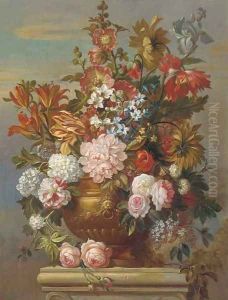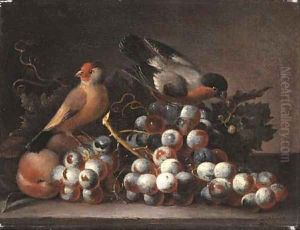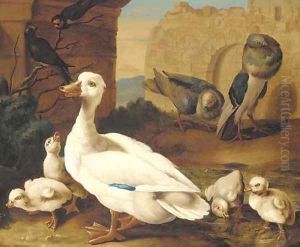Jacob Bogdani Paintings
Jacob Bogdani, born in 1658 in Eperjes, Kingdom of Hungary (present-day Prešov, Slovakia), was a prominent Hungarian-born painter known for his exquisite still life and bird paintings. His artistic journey began in his homeland, but his quest for greater exposure and development led him to move to Amsterdam in the late 17th century, a vibrant artistic hub at the time. This period was crucial for Bogdani as he was exposed to a wide range of artistic influences, including the works of Jan van Huysum and Melchior d'Hondecoeter, known for their detailed and lifelike representations of flowers and birds, respectively. These influences are evident in Bogdani's meticulous attention to detail and his vibrant portrayal of nature.
By 1688, Bogdani had relocated to England, where he would spend the remainder of his life. His arrival coincided with a period when the English nobility and wealthy patrons had developed a keen interest in art, especially exotic and natural subjects, which matched perfectly with Bogdani's expertise. He quickly established himself as a favored artist among the elite, receiving commissions from notable figures, including members of the royal family. His works were particularly admired for their vivid colors, dynamic compositions, and the lifelike accuracy of the flora and fauna depicted.
Throughout his career in England, Bogdani continued to evolve his style, incorporating more elaborate and exotic subjects into his paintings. He also mentored several artists, including his son-in-law, William Forster, passing on his techniques and passion for the natural world, thereby ensuring his influence on the next generation of painters.
Jacob Bogdani died in 1724 in London, leaving behind a legacy as one of the foremost painters of still life and bird subjects of his time. His works are preserved in several prestigious collections and museums, serving as a testament to his skill and enduring appeal as an artist.










